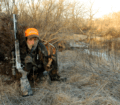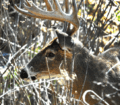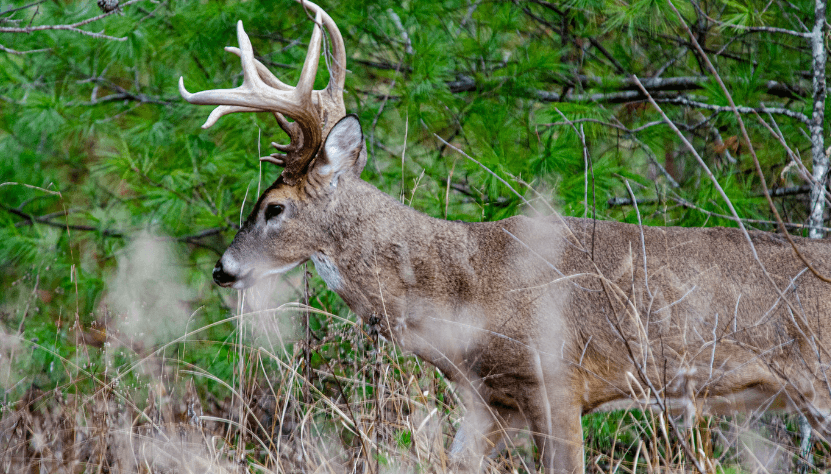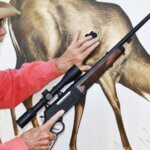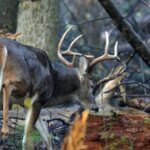Editor’s Note: Patterning is a term used frequently in the out-of-doors. Fishermen talk about patterning bass, duck hunters speak of patterning waterfowl, and deer hunters discuss patterning deer. What few of us fail to realize is that deer pattern people to survive. The older the buck, the quicker he learns to pattern hunters. The greater the hunting pressure, the easier the people and the deer are to pattern. Young bucks often die quickly. Older bucks that rely on their instincts from years past know when, where and how to retreat for cover when a human enters the woods. If you understand the mature buck deer, then you can think like him. Each buck in every situation is different, but let’s look at some examples of how to hunt these monarchs of the woods.
Find a Field Buck
The field buck is a wise, older deer that can be seen feeding in fields and pastures all summer long and at the beginning of hunting season. But just about the time the hunter decides to enter the woods, the buck vanishes. He can be spotted in the field at night, but rarely will he be seen during daylight hours. This buck realizes danger is in the woods when hunting season begins.
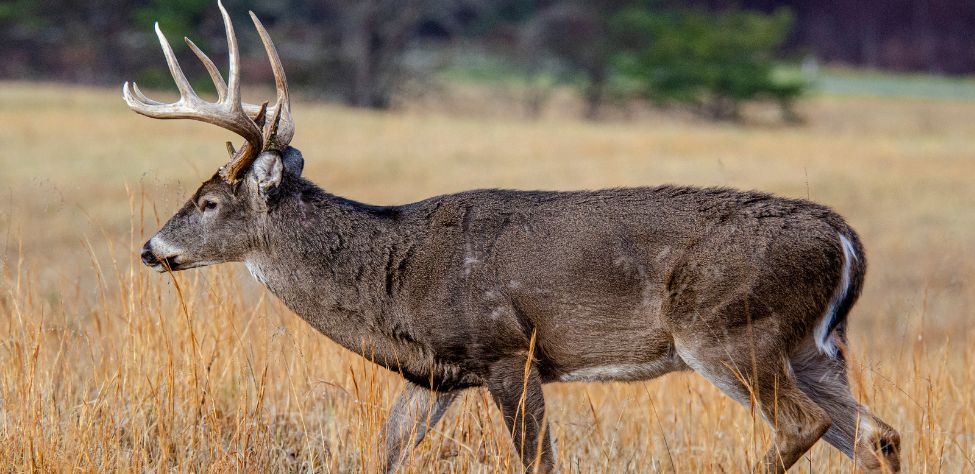
Identify a Field Buck’s Route
Since we know the buck is feeding in the field at night, the trick to bagging him is to find the route he takes to and from the field. After dark, navigation through the woods can be the key to taking that buck of a lifetime. You will find that the later in the season you try to hunt a field buck, the further he’ll be away from the field during daylight hours. But by following this buck’s travel lane from his field to his bedding area, you have two chances of bagging him – at first light or 30 minutes before dark.
Use Your Navigation Skills to Hunt a Field Buck in the Mornings
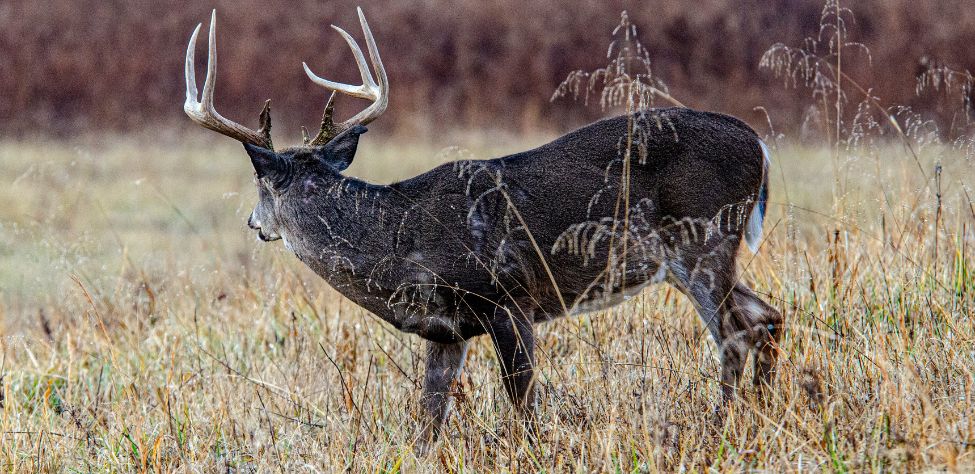
Once you’ve established the buck’s route from the field to the bedding area and have chosen a tree to put your stand in, go to that stand well before daylight, which will require navigation skills using a compass, your GPS – hand-held or on your phone – and/or your hunting app or maps. Arrive at the tree 45 minutes to an hour before sunrise. You only may have 15 to 20 minutes of hunting time at first light when the buck leaves the field and heads for his bedding site.
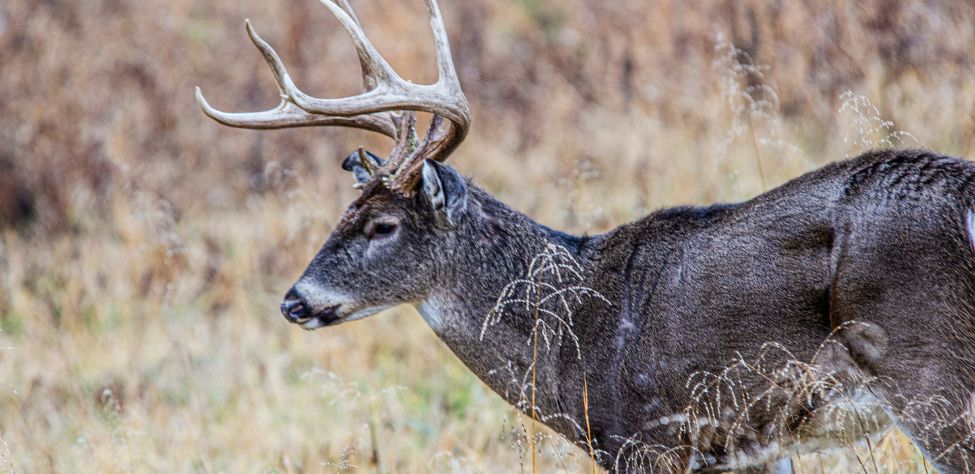
Pinpoint a Deer’s Staging Area, and Be There in the Late Afternoons
The other chance you’ll have at this buck will come about 30 minutes before dark. In studying bucks on hunting preserves where green field hunting is the only means of utilized harvest, many hunters have learned that trophy deer have what’s called a staging area – a region the deer come to and wait for nightfall before entering a field. This staging area usually will be from 100- to 300-yards away from the field. So, be in a tree 1-1/2 hours before dark near the deer’s staging area, and remain there until dark. Then you may get a shot at that trophy buck when he arrives. Remember, the deer knows when and where hunters will appear, because he has patterned them. To take one of these old, wise bucks, you must be in a place at a time when usually a hunter never shows up.
Tomorrow: Hunt Honey Hole Deer

How to Hunt and Take Big Buck Deer on Small Properties
In this book, you’ll hear from 14 hunters who either have gained permission or leased properties as small as six acres to as much as 250 acres, and how they consistently take older-age-class bucks off these little lands.
VERSIONS: AUDIBLE, KINDLE & PRINT

Jim Crumley’s Secrets of Bowhunting Deer
Using a black magic marker and a gray work jumpsuit, Jim Crumley of Buchanan, Virginia, drastically changed the nature and purpose of hunting camouflage when he created the first sportsman’s camouflage – Trebark. Crumley’s love of bowhunting and his desire to be more invisible changed hunting clothing forever.
In this hunting guide, he shares the wisdom that he’s learned throughout his lifetime about how to be a hunter, how to find a deer lease, how to scout for deer, and more.
Special features include how to:
- Have a magic 60 acres to hunt
- Decide the best equipment to use
- Find deer year-round
- Locate land to hunt
- Know the best place to put your tree stand
- Get bucks within bow range
VERSIONS: AUDIBLE, KINDLE & PRINT

How to Hunt Deer Like a Pro
How do you know if the land you hunt has a trophy deer on it? Wildlife manager Bob Zaiglin, of Uvalde, Texas and Jim Crumley, the father of modern-day hunting camouflage, tells you how to find out. GPS can make finding and taking that trophy buck easier. This hunting guide will teach you how to hunt big bucks where no one else can find them, how to call deer, and how to become versatile as a deer hunter, so that if one deer tactic doesn’t work, another one will.
In the chapter, “How to find Bucks at Scrape,” Dr. Keith Causey, retired professor of Wildlife Science at Auburn University, describes the best way to hunt a scrape.
Brad Harrison of Neosho, Missouri, is a nationally-known videographer, professional deer hunter and master at calling deer. Another master is Will Primos of Primos Game Calls. These two experts will tell the best deer calls and when to use them in this book.
And for over 20 years, Bo Pitman, lodge manager of White Oak Plantation, has been studying deer movement patterns. He explains what types of conditions are best for predicting deer movement.
VERSIONS: AUDIBLE, KINDLE & PRINT

Deer hunting and deer hunters are drastically changing each year. To learn new techniques for hunting deer and have more places to hunt, I’ve interviewed some of the best deer hunters in the nation and share their tactics in How to Hunt Deer Like a Pro: Volume II.
In Chapter 10, Jacob Lamar tells you his tactics for consistently taking older-age-class bucks on public lands in several states. Chapter 11, Bob Walker explains how to find places on public lands where you can hunt that 99 percent of the other hunters never have considered hunting. The Bonus Chapter with David Ramey tells you how, where, when and with what equipment to take big Kansas bucks on public lands by hunting in 100-degree weather when others won’t hunt.
Chapter 13, Mark Drury, his family and his guests take mature bucks every season by having more small places to hunt rather than one large property. Drury explains the strategy of having satellite farms to hunt that only may be 50-150 acres each or less. Chapter 15, Pat Reeve, who hunts far-northern states and Canada, says, “I don’t like hunting for mature bucks until the weather is 20 degrees or less.” Chapter 4, Dr. Larry Marchinton says that funnels are the most-reliable stand sites to hunt for big bucks and tells why.
VERSIONS: AUDIBLE & PRINT

